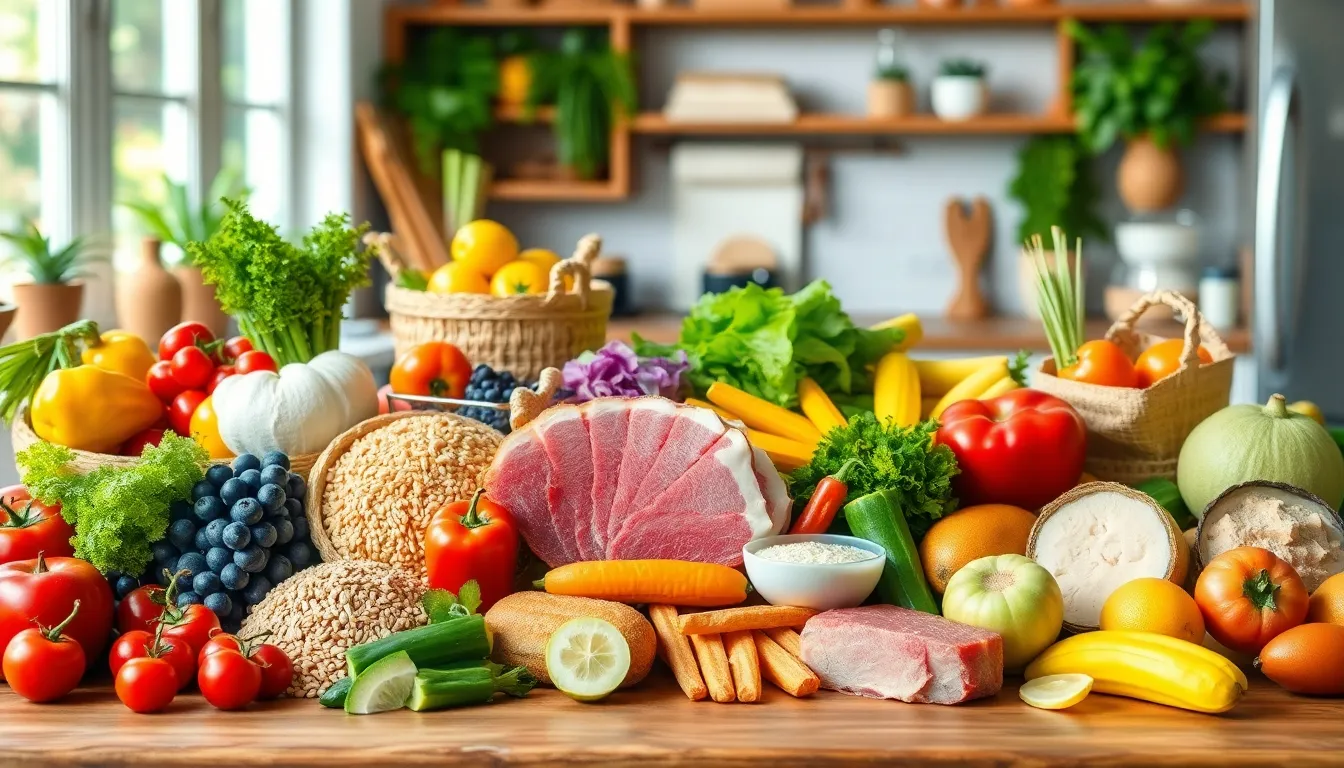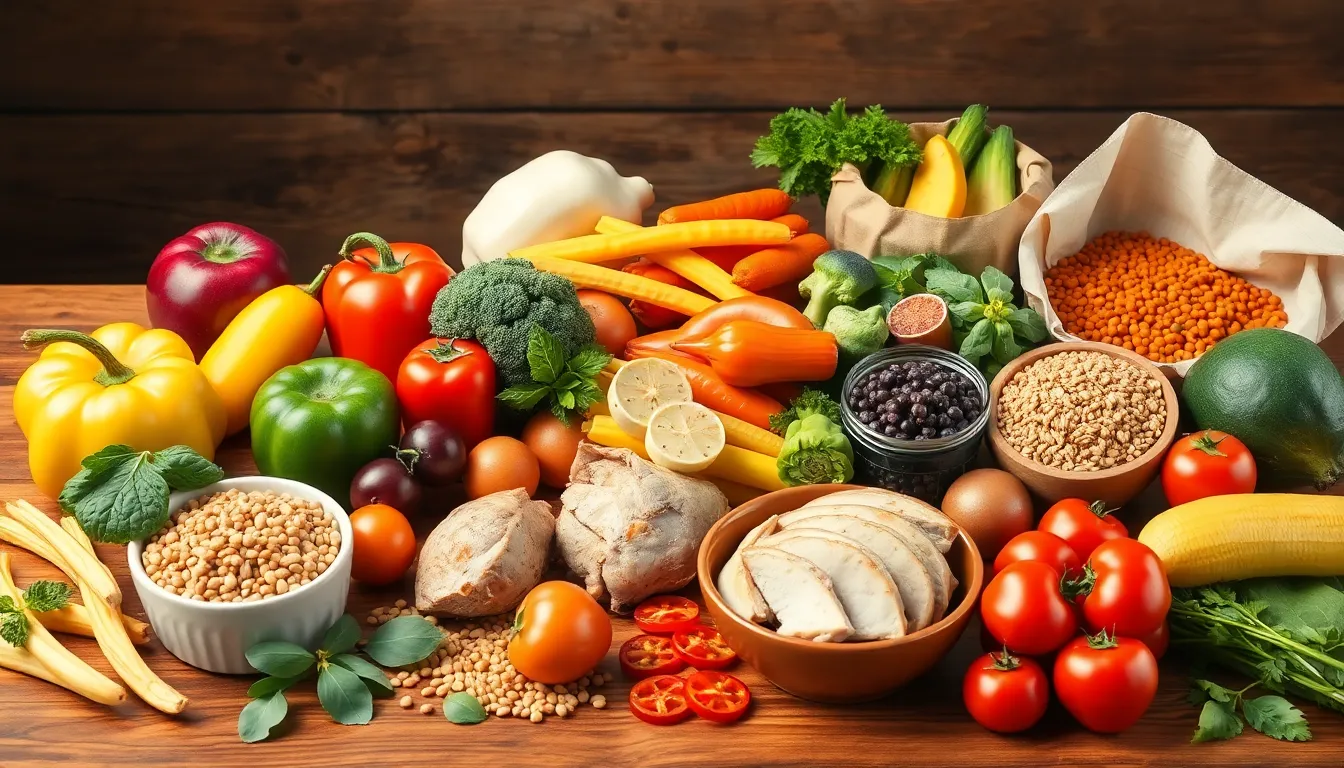In a world where kale smoothies and avocado toasts reign supreme, understanding nutrition can feel like deciphering hieroglyphics. But fear not! The nutrition picture isn’t just about counting calories or avoiding carbs like they’re an ex at a party. It’s about discovering what fuels the body and keeps it dancing through life—without the awkward shimmies.
Table of Contents
ToggleUnderstanding Nutrition Pictures
Nutrition pictures are visual representations of food items and their nutritional values. They help convey essential information about what contributes to a balanced diet.
Definition of Nutrition Pictures
Nutrition pictures, often seen on food packaging, illustrate the nutrition facts of various food items. These images include details like calorie counts, percentage of daily values for fat, carbohydrates, protein, vitamins, and minerals. By presenting this information visually, nutrition pictures make it easier for people to grasp the nutritional aspects of their food choices.
Importance of Nutrition Pictures
Nutrition pictures play a critical role in fostering informed dietary decisions. Visuals simplify complex nutritional data, allowing individuals to assess food quickly. These images can influence food choices, promoting healthier options while discouraging less nutritious ones. Understanding nutrition pictures aids in recognizing portion sizes, making meal planning more effective. By utilizing nutrition pictures, consumers can better align their dietary habits with their health goals.
Components of a Nutrition Picture


Understanding a nutrition picture involves recognizing its key components. These components consist of macronutrients and micronutrients, both of which play essential roles in overall health.
Macronutrients
Macronutrients include carbohydrates, proteins, and fats. Carbohydrates provide energy, making them crucial for daily activities. Proteins contribute to muscle growth and repair, essential for maintaining overall body function. Fats support cell structure and hormone production, serving as a vital energy source. Notably, each macronutrient has specific daily recommendations, typically reflecting individual energy needs. For instance, adults commonly require around 45-65% of their calories from carbohydrates, 10-35% from proteins, and 20-35% from fats. Reading nutrition pictures allows for quick assessments of these values in food items.
Micronutrients
Micronutrients encompass vitamins and minerals, vital for various bodily functions. Vitamins aid in processes like immune support and energy production, while minerals contribute to bone health and hydration balance. Common micronutrients include Vitamin C, essential for collagen synthesis, and calcium, important for maintaining strong bones. Daily values differ based on age, sex, and life stage; for example, adult women typically need 1,000 mg of calcium, while men require similar amounts. Nutrition pictures simplify identifying these nutrients in food, enabling informed dietary choices that enhance overall well-being.
How to Create an Effective Nutrition Picture
Creating an effective nutrition picture involves careful ingredient selection and thoughtful visual presentation. Both elements contribute significantly to making nutritional information clear and engaging.
Choosing the Right Ingredients
Selecting high-quality ingredients is essential for a compelling nutrition picture. Fresh fruits, vegetables, lean proteins, and whole grains provide rich nutritional value. Incorporate a variety of colors to enhance visual appeal and indicate diverse nutrients. Additionally, use locally sourced and seasonal ingredients when possible, as they often boast higher freshness and flavor. Aim to balance macronutrients—carbohydrates, proteins, and fats—within each meal. Highlighting specific nutrients can also guide individuals toward better choices. For example, showcasing whole grains can promote fiber intake while emphasizing lean proteins supports muscle health.
Visual Presentation Techniques
Utilizing effective visual presentation techniques enhances the understanding of nutritional information. Start with a clean and uncluttered layout, ensuring clarity and focus. Use contrasting colors to differentiate between food items and nutrients, making details readily accessible. Arrange ingredients in a way that tells a story about their nutritional benefits. Infographics that illustrate serving sizes, calorie counts, and nutrient breakdowns can further simplify complex information. Consider incorporating labels or icons to quickly convey essential data. Engaging graphics stimulate interest and make the nutritional content more memorable, aiding consumers in making informed dietary decisions.
Benefits of Using Nutrition Pictures
Nutrition pictures facilitate better understanding of dietary choices. These visuals enhance awareness and education about nutritional values, empowering individuals to make informed decisions regarding their meals.
Awareness and Education
Understanding nutrition labels becomes simpler with the help of nutrition pictures. These images present essential information at a glance, allowing consumers to quickly identify calorie counts and nutrient content. Individuals can recognize the importance of macronutrients and micronutrients as they see visual representations alongside food items. With clear graphics, educating oneself about healthy eating patterns becomes more accessible. Importantly, these visuals invite nutrition literacy, promoting discussions about dietary needs. Increased awareness leads to more conscious food choices that better align with personal health goals.
Encouraging Healthy Eating Habits
Nutrition pictures encourage individuals to adopt healthier eating habits by making nutritious options more appealing. Vibrant images of fruits, vegetables, and whole grains stimulate interest and motivate dietary changes. People often feel inspired to incorporate diverse foods into their meals when they visualize the benefits. Clear presentation of nutritional information helps them understand the impact of different foods on their health. Additionally, families benefit as children are more likely to choose wholesome foods when they see enticing visuals. By simplifying complex data and showcasing healthy options, nutrition pictures play a vital role in promoting a balanced diet.
Understanding nutrition pictures is essential for anyone aiming to improve their dietary habits. These visual tools simplify complex nutritional information and empower consumers to make informed choices. By focusing on the balance of macronutrients and the inclusion of micronutrients, individuals can enhance their overall well-being.
Incorporating vibrant and appealing nutrition pictures into meal planning not only makes food more attractive but also encourages healthier eating habits. As awareness of nutrition continues to grow, leveraging these visuals can lead to better health outcomes and foster a deeper connection with food. Embracing nutrition pictures is a step toward a more informed and health-conscious lifestyle.





